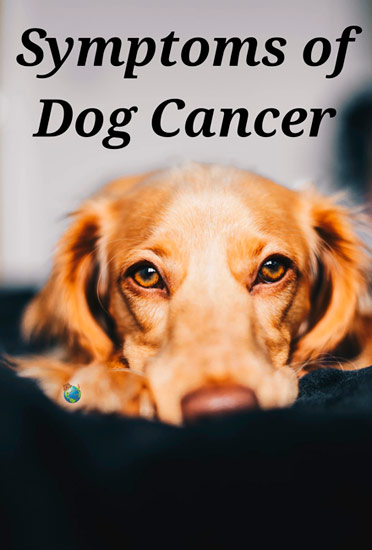Does My Dog Have Cancer?
Unfortunately, like humans, the occurrence of cancer in dogs is becoming more common. Cancer has affected almost everyone’s life. Whether it is someone you know or even yourself, we are sure cancer has been present in your life at one point or another. Do you know someone with cancer? Do you know someone who has beat or died of cancer? Have you heard of someone’s dog having cancer? Sadly, it’s likely your answer is yes. Attention to your dog’s behavior/patterns, proactive actions, and keeping yourself healthy, are all great ways to prevent dog diseases.
Dog Cancer Statistics
It’s hard enough to accept cancer as a threat to our human loved ones, but now it is taking the lives of our four legged friends too. According to Bark.com, 1 in 4 dogs will develop a cancerous tumor. That’s not a number to ignore! Cancer is said to be the number one disease in dogs. That’s a believable statistic when 25% of dogs are developing tumors on their bodies that are often ignored. We can’t ignore cancer’s warning signs, like tumors and growths on our dogs. Early detection is very important and could be a matter of life or death.
You may ask, does my dog have cancer? We’d like to say the answer is no. But it’s always good to educate yourself on the warning signs and symptoms of dog cancer. So what are the symptoms of dog cancer?
- Much like humans, dogs won’t act themselves when they aren’t feeling well, or in this case, suffering from cancer. Make sure your dog is always maintaining consistent activity levels. If your dog is sleeping more than usual, having trouble moving or breathing, or not eating, you will want to get him/her examined. As living beings, it’s our natural instinct to eat. If your dog loses his/her appetite for more than a day or two, have them checked by your Vet.
- Your dog doesn’t always have to lose weight from not eating. A dog can have a healthy appetite and still lose weight. This is a major warning sign. Weight loss in dogs isn’t always a sign of cancer, but it can be. It could be a sign of another illness or disease. Either way, you will want to bring your dog to the vet for testing.
- Dogs should be able to move their bowels and urinate as they please. If they are having issues with this then you should investigate further. Sometimes dogs have trouble going to the bathroom if they eat things they shouldn’t, like toiler paper. Eating objects can cause obstruction in the intestines. Obstructions should be taken care of by your vet. If your dog isn’t eating odd household items and he is having trouble or pain going to the bathroom then you should bring him to the vet for testing. On the other end of constipation is diarrhea. Constant diarrhea is also a warning sign, along with vomiting.
- We’ve all smelled a stinky stench after your dog has passed gas. These smells should be limited to one night (after eating something irregular like human food) or a few sporadic farts throughout the week. If your dog consistently has foul smelling gas then you should look into the problem. Perhaps you need to change your dog’s food or treats. If that isn’t a solution then you should bring your dog to the vet. Strong consistent odors are something to pay attention to, especially when they come from the rectal area. This also applies to your dog’s breath. Foul breath is common, especially after eating, but unusually foul breath could also be a sign of cancer.
- Pay attention to your dog’s body. You should seek veterinary attention if any fluids are coming out of your dog’s body that may seem abnormal. Leakage or bleeding from wounds or open sores should be treated. The source of these sores and wounds should be identified. Growths, changes in skin color, and tumors should be examined. As previously discussed, growths can be tumors which could be cancerous. Be aware, growths don’t always have to be obviously large or golf ball sized. They can be small bumps under, or on the skin.
- A dog’s gums should be a healthy pinkish red. Any other color could indicate illness or disease. You can read more about the color of a dog’s gums here: Checking Your Dog’s Mouth & Gums for Diseases. Each color can be a tell tale sign of a specific illness. If your dog’s gums are white or very pale, seek veterinary attention. Your dog could be experiencing internal bleeding from a cancerous tumor. Blood loss or internal bleeding causes pale colored gums. Some cancers (including bone marrow cancer) tend to cause decreased blood flow, lower blood pressure, and decreased blood cell production. All of these ailments could cause pale or white gums.
Dog Cancer Symptoms
Abnormal Activity
Weight Loss
Abnormal Bodily Functions
Gas & Bad Breath
Growths, Fluids, Wounds, and Excretions
Pale or white gums
Be Mindful of Your Dog’s Behavior
It can be nerve-wracking when something as common as foul breath could be a cause of cancer, but don’t be alarmed. You will want to focus on the collective symptoms your dog may or may not have. You will also want to pay attention to the consistency of these symptoms. Don’t get nervous if your dog has one sleepy day and then he is fine for the rest of the week. You know your dog best, so if something seems “off” then pay mind to it. We know how scary the unknown can be when dealing with cancer. The best way to handle cancer is to be informed, act early, seek preventative care, and get veterinary attention. Dog’s lives can be saved by taking early action and not ignoring signs and symptoms of cancer.
Kimberly Mattar
January, 8th 2016
Updated on May 22nd, 2019

Kim is the co-owner of DogLoverStore with her husband, John. She earned her BS in operations management at the University of Massachusetts Dartmouth. She enjoys walking in nature, gardening in the sun, eating sour candy, going on drives, yoga, and reading.

